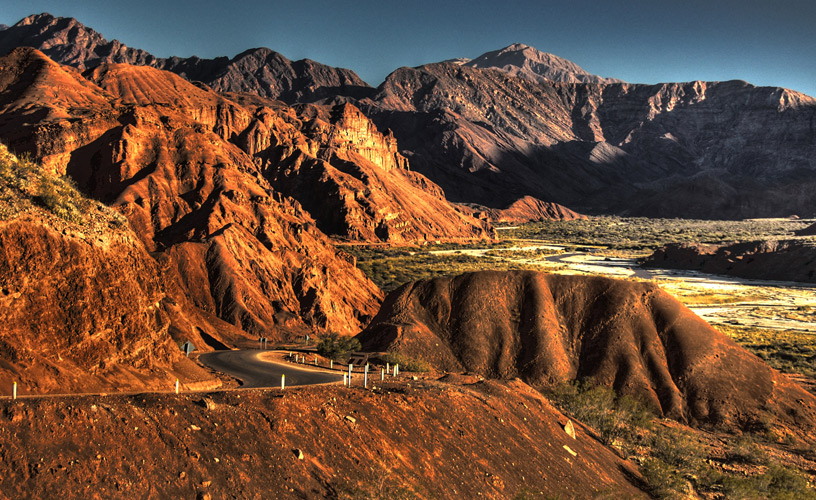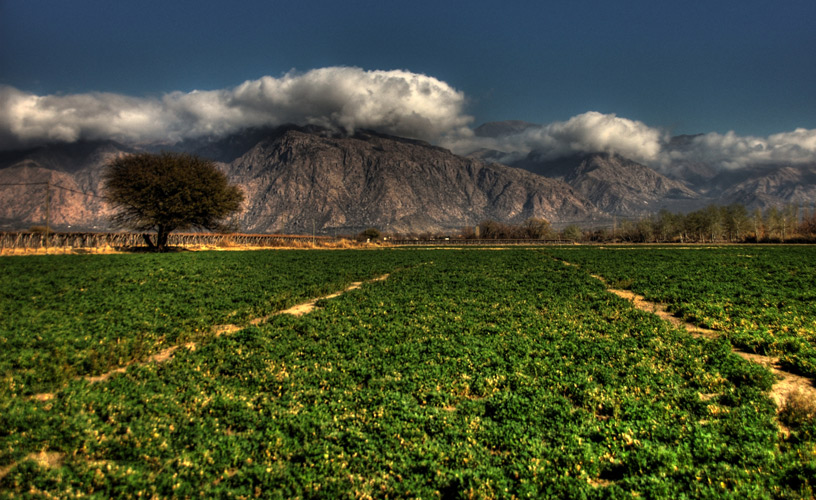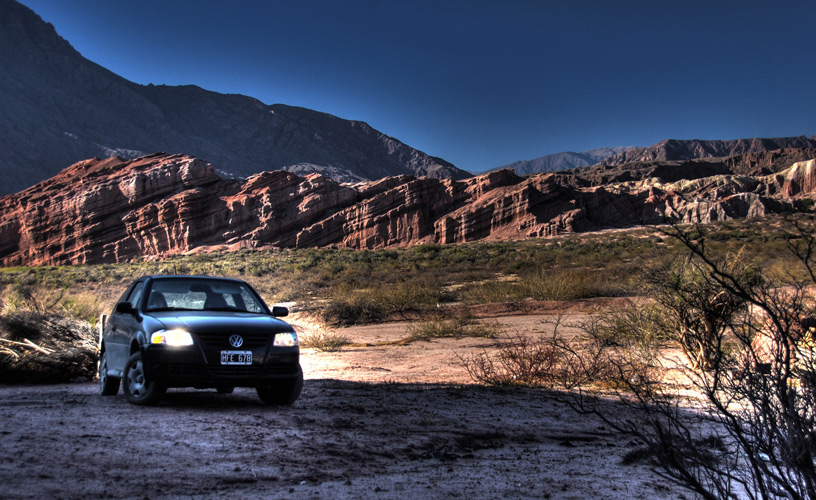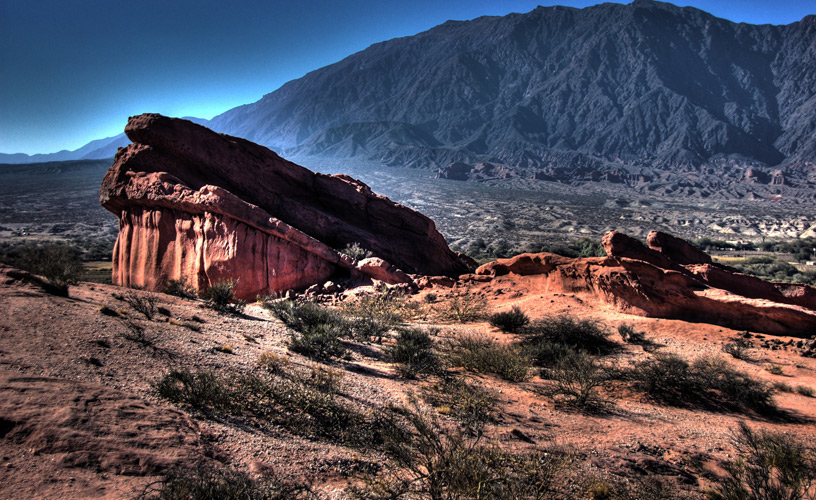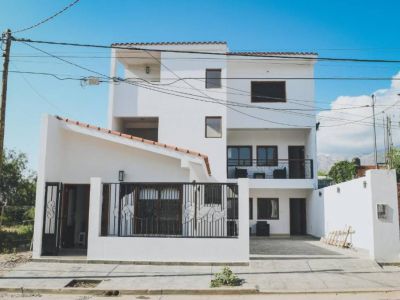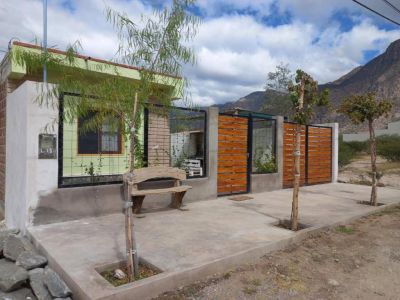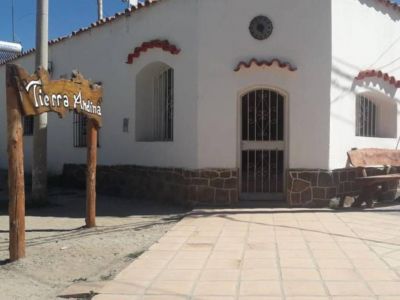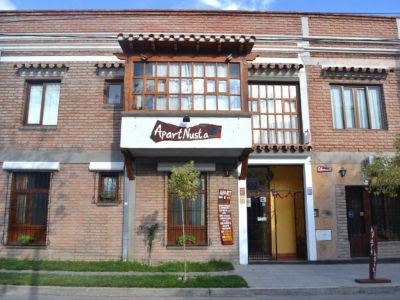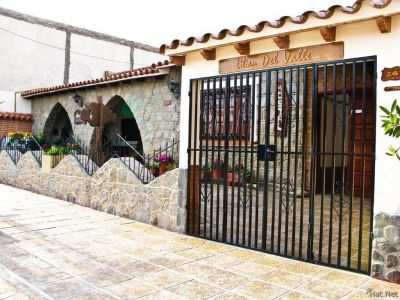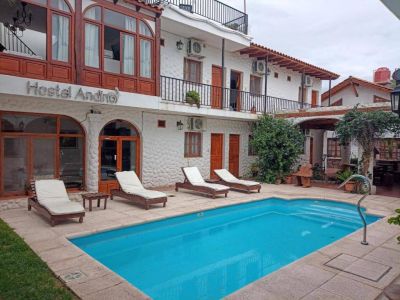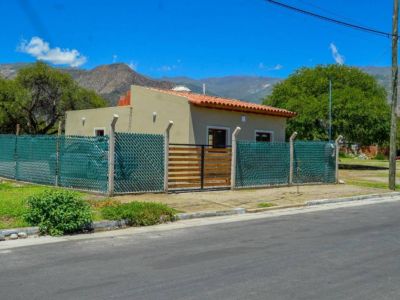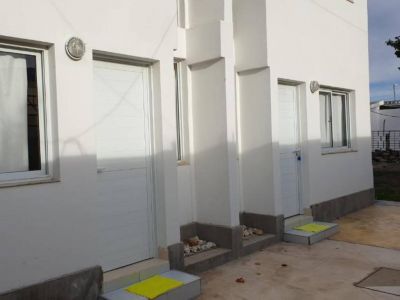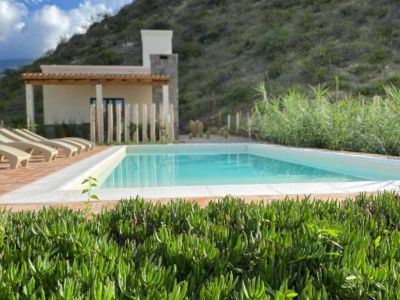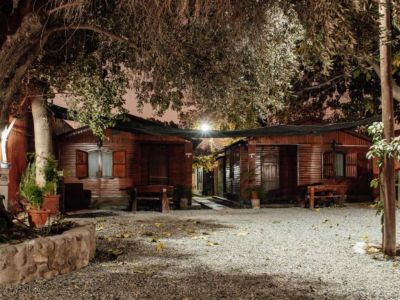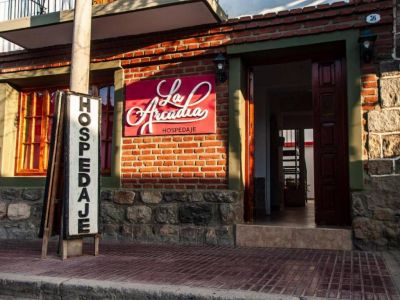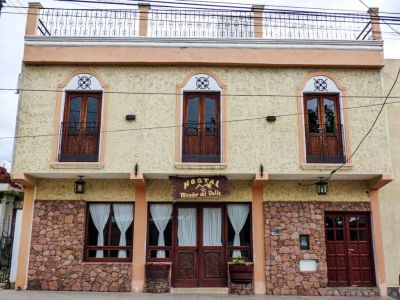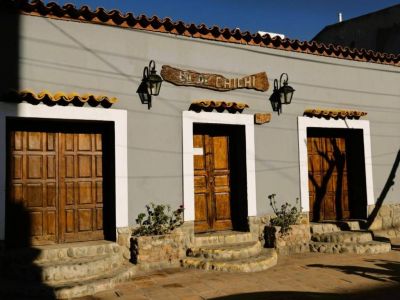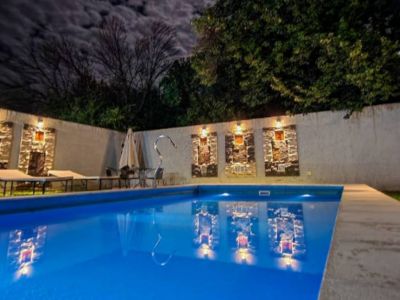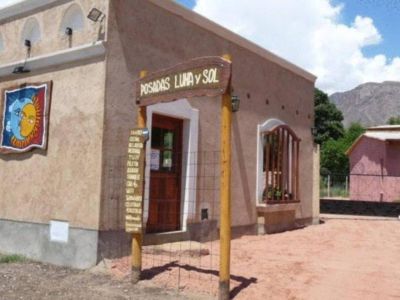Alemanía lies half way between Salta and Cafayate, 107 kilometers from the capital of the province. Stopping and watching what is left from the days on which gold and the railway were in the air is totally worth while. The visual paradise starts at the small town and the Calchaquí Valleys are the main protagonists.
The Other Ravine
The Las Conchas River Ravine begins to show us the tracks left by the wind, which eroded and gave shape to the mountains of unique colors as if they were leaves, easy to manipulate. Winds from time immemorial have visited them long before man did.
As the road begins to narrow down and get surrounded by high walls, going from one side to the other along the ravine, we watch how man has managed to impose the simplest shape on the best slope in order to get through: a road which is paved nowadays. This does not mean it was an easy task.
All the Leaves Belong to the Wind
because he moves them even after they are dead
all the leaves belong to the wind
except sunshine"
“The Devil’s Throat” is the first tourist attraction the wind carved in this area. This is a real hole in the mountain wall which lets us behold a kind of roofless cavern. As amazing as the echo of our voices projecting into the hollowness. (Luis Alberto Spinetta)
Following the road, “The Amphitheater” appears. A beautiful place where the wind has also managed to go through the stone and give shape to a unique site where it is possible to watch the magic of nature from the first row.
Afterwards, the road seems to open its way through the mountains and the Las Conchas River increases its volume as we go ahead. Armed with nets and spears, children fish some of the large shad that try to go up the river in the clear waters that run less than one meter deep.
“The Obelisk” is the next surprising geographical feature on the way. This is a small sharp-pointed mountain whose summit is about fifty meters high. Its eroded top catches the tourists’ attention as it resembles the mythical obelisk from the City of Buenos Aires, but with a particular idiosyncrasy this time, carved in stone by nature.
A few meters ahead, on the right, it is possible to see large rock and terra cota constructions resembling medieval castles, with majestic openings and watching towers. At their base, the placid river rests just like the ancient moat waters around real-life castles.
Some kilometers ahead, the mountains seem to fall abruptly into the river, as if they were announcing a noise that could not be silenced. There comes “The Friar”, a rocky formation which, from the heights, seems to summon everyone to attend mass.
“The Toadstool”, not so attractive as the latter, shows how the wind and the water have washed the rock as if it was a bowl and how its earthly sustain has adopted the shape of a short but resistant stem, as if it was a juicy and delicious mushroom.
Farther ahead, stand “The Windows”, one of the last formations visitors can run across before reaching beautiful Cafayate. They let us see the large white sandhills sprinkled with green vineyards or the Colorado River with just a thread of water along the reddish and clayish soil. The road has lost height and a long straight line turns into a fertile valley called Cafayate.
Maybe, the way back let us behold the same figures at dusk, when the 7 o’clock mass celebrated by the Friar reminds us that it is possible to see various natural figures with a life of their own on the way to Cafayate, even if their movements and sounds are not perceived by human eyes and ears.
because he moves them even after they are dead
all the leaves belong to the wind
except sunshine."
Pablo Etchevers
Eduardo Epifanio
Terminos y condiciones
Contacto
